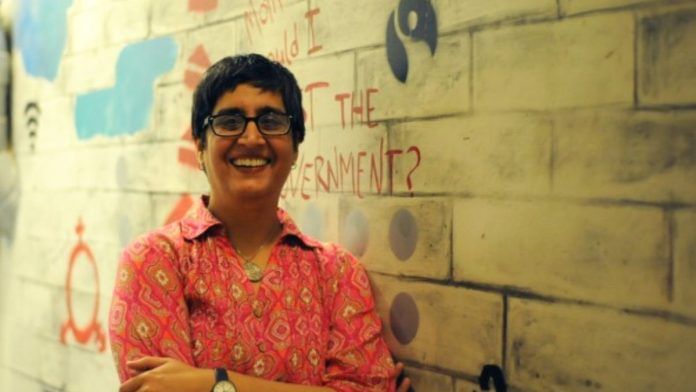New Delhi: In After Sabeen, a documentary film which chronicles the impact of Pakistani peace activist Sabeen Mahmud, her mother, Mahenaz Mahmud, is seen sitting on her daughter’s bed. Sabeen was assassinated by gunmen a decade ago, but her room remains intact. The bed is made, there’s a stack of books on the bedside table, and a poster of British actor Hugh Laurie.
This is Mahenaz’s act of resistance—part of a “game” she plays with herself. She knows Sabeen is not coming back. But if she does, her room will be ready to greet her.
“Over these 17 months, I’ve spent a lot of time in this room. I want it to be an active room,” she says in the film. “I feel Sabeen’s presence.”
Directed by Schokofeh Kamiz and released in 2018, the film serves as a firm, lasting act of remembrance. Sabeen, who was killed after she hosted a seminar on Balochistan’s ‘disappeared people’, is presented as simultaneously ordinary and extraordinary. A woman who fought for the rights of the marginalised and dispossessed, but also belonged to a fleet of family and friends. An online discussion on the film, hosted by the South Asia Peace Network (Sapan), also consisted of those who knew her intimately, as well as fleetingly—reiterating this very dimension of activism that is as intimate as it is public.
The discussion featured Kamiz as well as renowned Indian documentary maker Anand Patwardhan, known for his searing political films. Bangladeshi photographer and writer Shahidul Alam was supposed to be part of the panel, but he was on the Gaza Freedom Flotilla — a convoy of global activists trying to reach Gaza with aid.
“When Sabeen was killed 10 years ago, we were all shocked, but finally I got to see a film about her,” said Patwardhan, who screened the film at the Prithvi Theatre in Mumbai.
Director Kamiz chanced upon Sabeen by accident. A friend of hers, anthropologist Oman Kosmani, was supposed to meet her. But could not—because Sabeen had been shot. They finally met with another artist and spent 7 hours talking about Sabeen.
“I fell in love with her without knowing her. Something connected me to her,” she said.
What’s remarkable about the film is the fact that Sabeen is barely there—almost a phantom. Instead, it portrays her as an almost mediator. She inhabits lives, social and political movements. But physically, she is not there.
Also read: Indians are still rejecting Left ideology. New book says there’s resurgence ahead
Extraordinary of the ordinary
Mahanaz, who was also wounded in the attack that killed her daughter, waters the amaltas tree, which grows in the exact spot where Sabeen died. The tree is taller than her now, she tells Kamiz. These tiny moments of grief, captured matter-of-factly, are what stand out most in the film.
At the online discussion, a number of people discussed how they had engaged with the film. Some were still working up the courage to watch it. Others referred to its interiority —Sabeen’s cat Jadoo caught between the folds of a mattress, her car being driven around Karachi.
“It is human beings who are so heroic. It is ordinary people,” said a viewer, recounting a scene between Mahanaz and Sabeen’s grandmother, where the latter breaks down. “Isn’t that how people react? It’s ordinary people who do the most extraordinary things. Sabeen lived every moment of her life. That is what we need to pause and think about.”
Over the years, several activists have met the same fate as Sabeen. Global solidarities were discussed—from Gauri Lankesh to Swedish peace activist Joe Hill, who died over a century ago. It is through narratives that their work lives on—which is where filmmakers come in.
“Artists and filmmakers demonstrate activism by connecting public profiles with politics,” said anti-nuclear activist Lalita Ramdas. “Activist filmmaking walks a fine line between documenting reality and pushing people to act.”
Kamiz made the film by overcoming several odds. She didn’t have the finances, and she was questioned for filming in Karachi. Much of the film’s sights and sounds are captured from the seat of a car. But it was the people who made Sabeen.
“Everyone had something to say, maybe it was subtle, maybe it was small,” she said. “I remember thinking that is the life I want to live—not to do the big stuff, but do something from the inside.”
(Edited by Ratan Priya)






